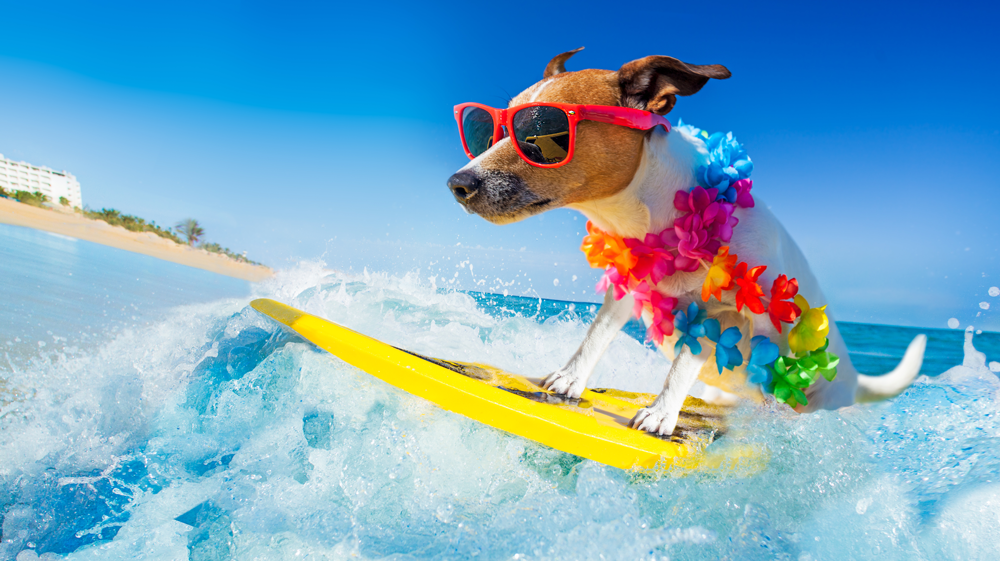Tails
Making pet parenting easy

Summertime and pet-friendly practices
This entry was posted on 2019-12-09.
Every year summer brings with it energy and excitement. The kind that makes you want to get out and do things: be outside, be in nature. And who better to spend this time with than your beloved fur friend?
To make the most of this amazing time of year, there are a few things a pet owner can do or be aware of, to prepare your fur family to have the best time too.
Pay attention to these few simple steps and you’ll be galavanting galore:
-
- Fitness
- Grass seeds
- Dog fights
- Heat and its effects
- Parasites
- Footpad care
Fitness is a very important thing that we often forget about! Dogs don’t just stay fit all year long, especially as they get older. During the day, most dogs tend to lay around sleeping. This means they might not be fit enough to climb that mountain or suddenly do a 4-hour walk. But they most definitely will try; almost always to their own detriment. You need to work on their strength and fitness regularly and gradually. It is better, like us, to start off slowly and increase the duration of exercise steadily. Suddenly going on an epic hike just because it’s a beautiful day may not be the best idea for your dog if they are unfit, as they will share your enthusiasm and excitement, but will not self-limit, leading to over exertion and injury. Many dogs will carry on running/walking/swimming until they quite literally drop down from exhaustion. Resulting in stiffness, muscle strain and other injuries. And just like us, this is not good for your beloved fur friend. It’s up to you to regulate them. Thus the best plan would be to do regular exercise throughout the year so that when that amazing weather arrives, you and your pet will be ready for that epic walk!
Another thing to be aware of with the change of season is the changes in the environments you walk in. During spring and summer, especially towards the end when the grass turns brown, you should be aware of grass seeds sticking to your pets coat, which can then migrate into their skin and cause many problems. Examine your dog after every walk, check their whole body but pay special attention to their paws and their ears. Clip their coats to prevent grass seed attachment and groom them regularly.
Parasites also change with the seasons, and as summer approaches, one should always be on tick and flea patrol. Tick bite fever is generally more prevalent in summer months. This has to do with its life cycle and the general increase in numbers over those months. Clinical signs of tick bite fever include: lethargy, loss of appetite, fever and sometimes dogs vomit once off. Flea numbers also tend to increase over the summer season. There are fantastic tick and flea products now available and ideally, one should treat all year round rather than just in outbreak situations and prevent disease.
A change in environment can also mean a change in water sources. If your dog is used to drinking from a river while on a walk or going for a swim, remember that this could change during the dry summer months. Also, as the water dries, one often has stagnant ponds, which may be filled with things like algae and bacteria. This water may not be good for your pet to drink or roll in, as it could cause gastro or a skin rash. Always be prepared and take clean water and a water bowl with you! If your dog happens to swim, lie or roll in stagnant dirty water, wash them when you get home, especially if your dog has sensitive skin.
During the hot summer months, one also wants to choose the time of day that is safest for your dog to walk. It is not safe to walk your pet at the hottest time of the day as heatstroke could become a very real danger. This is especially crucial for the short nose breeds or brachycephalics such as bulldogs and pugs. Heatstroke is a very serious complication of overheating and is a medical emergency.
In hotter months, pet owners should always remember that the walking surfaces and paths you walk your dog may change. Hot tar will burn a dog’s footpads. Also be careful on longer walks that they don’t scuff or crack their footpads, as this really can take an incredibly long time to heal. Always be on the look for any glass and litter on your walks.
And lastly, an odd point to make but something to be aware of is that vet practices always see more dog fights during the spring and summer months. So when you are out on your regular walks, try to be more aware of those around you. There are a few reasons for this: people often decide to start walking their dogs in good weather, but this does not mean that they are necessarily well socialised. Secondly, the most adoptions from welfare societies happen during summer, so there are many new kids on the block. And lastly, it also happens to be the time of year that animals tend to be more sexually active.
Summer is the best time of year to be out and about! Spending those longer days being active and doing more walks is something I would recommend to everyone. But remember that changes can bring new challenges and be prepared for what the change in season holds, will make it better for you and your fur family!


